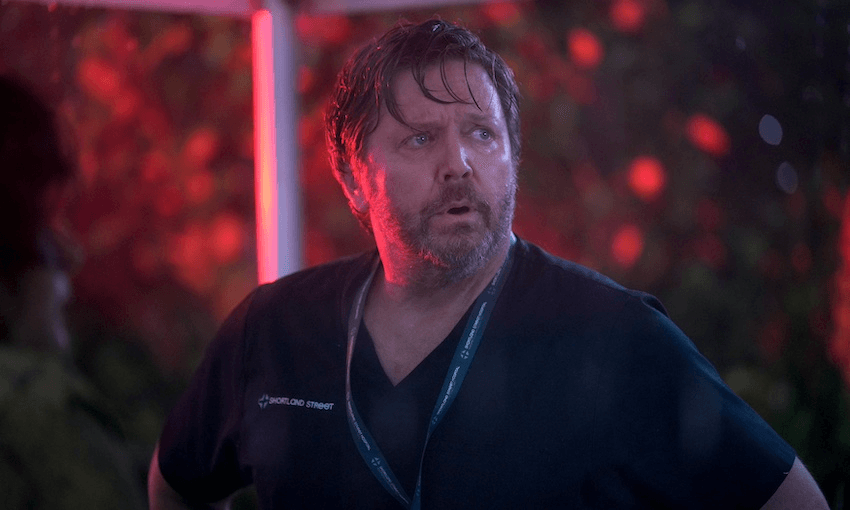Been living under a proverbial rock for the past ten years and have never heard of RuPaul’s Drag Race? Don’t worry, Sam Brooks has you covered.
Okay, so first up: A lot of you will know what Drag Race is. You will be obsessed with it already. You have a top five favourite queen, you have an opinion on who should’ve won All Stars 3 (Ben), you will be saying ‘Miss Vanjie’ every time you leave a room.
This post isn’t for you. You can go watch season one and two right here, and you really should, because it’s important to know the humble (read: low-rent) beginnings of the show.
This post is for the rest of you, those who have heard tales of this show but been too scared to dive in, because the show is now in its tenth season, and it seems like an impenetrable fortress of homosexuality, gifs and inside jokes that may as well be hieroglyphics to you.
So… what’s the concept of the show?
The most elegant and economical way I’ve heard it explained is that it’s Project Runway meets America’s Next Top Model meets American Idol (but with lip-syncing) and also drag queens. That’s not particularly elegant or economical either, which just goes to show how jam-packed this show is.
Essentially, twelve drag queens a week compete to be America’s Next Drag Superstar. The host is RuPaul, the world’s most famous and successful drag queen, and the only drag queen to have a top 40 Billboard hit. There’s a mini-challenge, which is usually a parody of some actual reality challenge, and a main challenge, which tests some of the key pointers of being a ‘good’ drag queen.
Each week there is a top and two bottoms (if you think that is a bad pun, you will not be able to handle this show, turn back). The two bottoms lip-sync for their lives, and this is often the most memorable part of the show.
As with all reality shows, people are eliminated until there is a winner. There is also a Miss Congeniality, who is not Sandra Bullock.
So what makes it such a phenomenon?
To be straight up: It’s one of the best edited and produced reality TV shows ever made. The people working behind the scenes know how to cut between twelve men dressed as women for maximum drama and maximum hilarity; they know when to amp up the former, and they know exactly when to bring in the latter.
And to be gay up: These are drag queens. Drag is an artform that exists to parody, satirise and fuck with our perceptions of what is real and what is normative. Most importantly, they are performers. If you put them onstage or in front of a camera, they will perform. And they’ll give you more than enough to edit a show together.
But that’s being technical and intellectual about it. Mostly it’s become a phenomenon because of those moments that you absolutely can’t script, like Mimi Imfurst lifting up India Ferrah, Detox saying “I’ve had it officially!” or Phi Phi O’Hara telling Sharon Needles to go back to Party City where she belongs.
If those mean nothing to you, get watching.
I’ve seen all the other seasons – seasons one and two look a bit shit though!
First, get out of here! I told you this post wasn’t for you! What are you still doing here?
Second, look… you’re not wrong. Season one looks like it was filmed by cameras covered with enough Vaseline to keep Peaches & Cream in business for the forseeable future, and season two is a noticeable step up, but it has nowhere near the production quality of the latest seasons.
But! It’s interesting to see where a great show came from, and to follow its development. There’s also a charm to these earlier scenes, before it became the genuine worldwide hit it is now. These seasons are a bit grungier, you can see the cracks in the foundation (building and makeup both) and it’s before anybody knew what they were really doing.
The later seasons have queens who are more savvy to the reality show format – queens who come with a catchphrase prepared, ready to be the social media breakout – and while that can be fun in itself, there’s something special about seeing a reality show where everybody is mucking in together and nobody has any idea what the final product is going to look like. They’re just trying to be the best drag queen they can be.
What is Untucked?
Untucked is the Drag Race post-show show. Basically the queens sit around and make gifs at each other. It’s catty as hell, and provides as much drama as the core show does. I actually haven’t seen the Untucked for season two, so I’m genuinely excited to see this one.
But it’s just a silly reality show, right?
Yes! But also no.
One of the best things about Drag Race is how it pulls in and puts forward a hugely diverse range of topics. It is, perhaps unsurprisingly, the show with the largest cast of LGBT people on TV, and it discusses issues of homophobia, racism, class, and even faith with a surprising amount of tact and honesty.
It’s a silly show about men who dress up as women, but it also never forgets there are human beings underneath all those makeup, and it does its best to reveal the struggles of those people without being too heavy about it.
I’m still not convinced.
You know what, fine. Watch this. And if you’re not convinced, you never will be:
https://www.youtube.com/watch?v=1JHuajCEQRQ
You can watch RuPaul’s Drag Race Season One and Two, including Untucked, on TVNZ on Demand right here.



